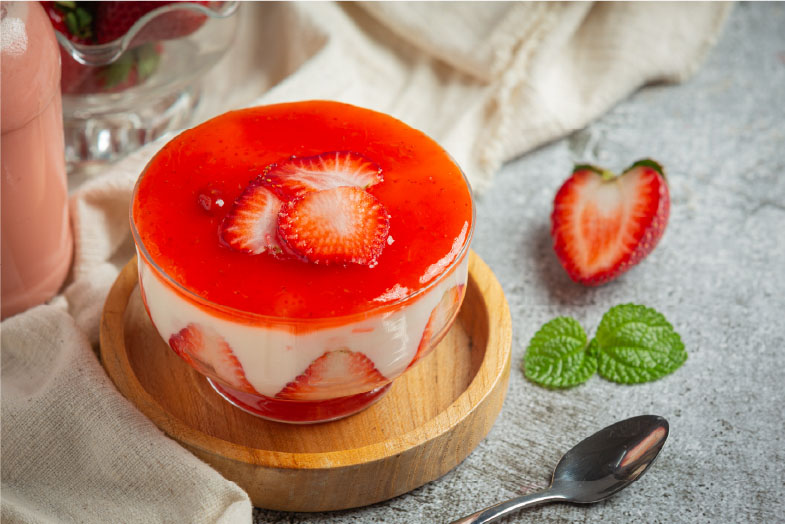Agar-Agar, commonly referred to as agar (code E406), is one of the oldest food additives, first recognized in Japan and later in the 17th and 18th centuries worldwide. This additive, as a low-calorie thickener, can produce high-quality, low-calorie jelly because it has fewer calories compared to common thickeners like pectin. It’s important to know that agar is composed of hydrocolloids and has zero sugar and fat content, whereas pectin is made from galacturonic acid subunits (an acidic sugar) and is not as low-calorie as agar.
Agar allows us to have a gel with heat resistance and high quality, so we do not have to worry about the hydrolysis of the thickeners in the products.
How to Have Low-Calorie Jelly with Agar?
Agar is extracted from red algae and serves as a thickener for sweet and low-calorie products. It also contains a significant amount of fiber and can help the human digestive process. This substance is made of two Polysaccharides, Agarose, and Agaropectin, and one of which can form a gel. Agaropectin, a heterogeneous polysaccharide made of different building blocks, is not effective in gel production, but Agarose, which makes up the majority of agar, is a neutral polymer with repeating units called Agarose and has good gel-forming capabilities.
Recently, agar has been used as a thickener for making jelly because it offers lower calories and a better taste to our product. Agar is also used in other products such as mousse, pudding, ready-to-eat desserts, candies, ice cream, and meat products. In very dilute solutions, gel formation can occur in very small amounts, approximately 0.5 to 1.5%. The difference in melting and gelling points (hysteresis) in agar is high, making it easier to use. Another important point is the boiling point of thickeners. Comparing the boiling points of agar and gelatin, agar boils at 85°C while gelatin boils at 35°C. If your product manufacturing process requires the application of heat, agar is a better choice as a thickener.
Agar has high thermal resistance to hydrolysis, for example, in canned meat, it can tolerate sterilization temperatures up to 121°C. This point is particularly important for manufactured products in an acidic environment, If you have a low pH environment, dissolve the agar completely first and reduce its temperature as much as possible to prevent hydrolysis. Additionally, if your product contains Tannic acid, it is better to add a little Glycerol to the formula, as Tannic acid prevents agar from gelling.
Interestingly, agar extraction is carried out by two methods: Freezing-thawing and Syneresis (expulsion of a liquid from a gel). For the first time, about 300 years ago, it was extracted by the freezing-thawing method, but with the passage of time and the advancement of technology, syneresis replaced that method. The synergistic method is based on the property of gelling colloids by which the absorbed water can be eliminated using applied small hydraulic presses. The biggest advantage of the modern method is that the purity of this substance is much higher compared to the freezing-thawing method.


